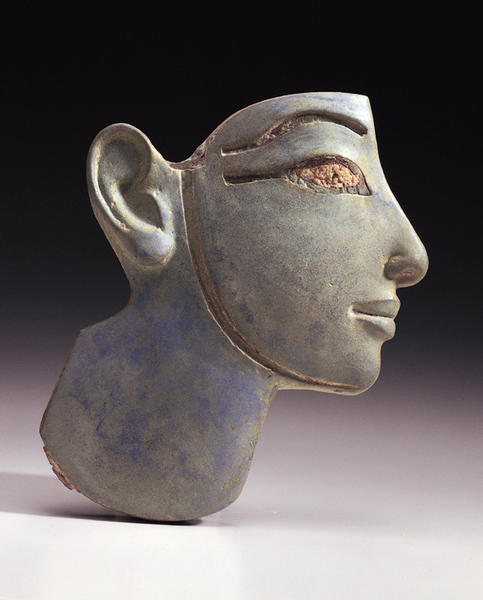Inlay of a Pharaoh's Head
- Egypt
- 15th - 14th century B.C.
- after 664 B.C.
- Faience and glass
- H-15.3 W-11.5
Catalogue Entry
This beautiful inlay head would have formed part of a larger composition (such as a furniture panel or wall of a shrine) made of contrasting materials that fit together like the pieces of a jigsaw puzzle.1 The outline of the top of the head shows that the subject wore a king's crown. The incised line running from the sideburn to the chin, once inlaid (as were the outlines of the eye and eyebrow, the eye itself being made of a white frit within a glassy green border), indicates a strap for the attachment of a false beard. Such composite figures first appeared late in the Eighteenth Dynasty, the best-known examples being the figures on the back of Tutankhamen's golden throne. The technique, however, persisted long afterward. The composition of the faience used for this elegant inlay, however, as well as its coloration, suggest a later date.
LMB
1. Ex collections: Omar Pasha Sultan, Cairo; Norbert Schimmel, New York. Exhibited: Cleveland, 1974, The Cleveland Museum of Art (also traveled to Dallas, New York, and Jerusalem); Berlin, 1978, トgyptisches Museum (also traveled to Hamburg and Munich). Publications listed above.
